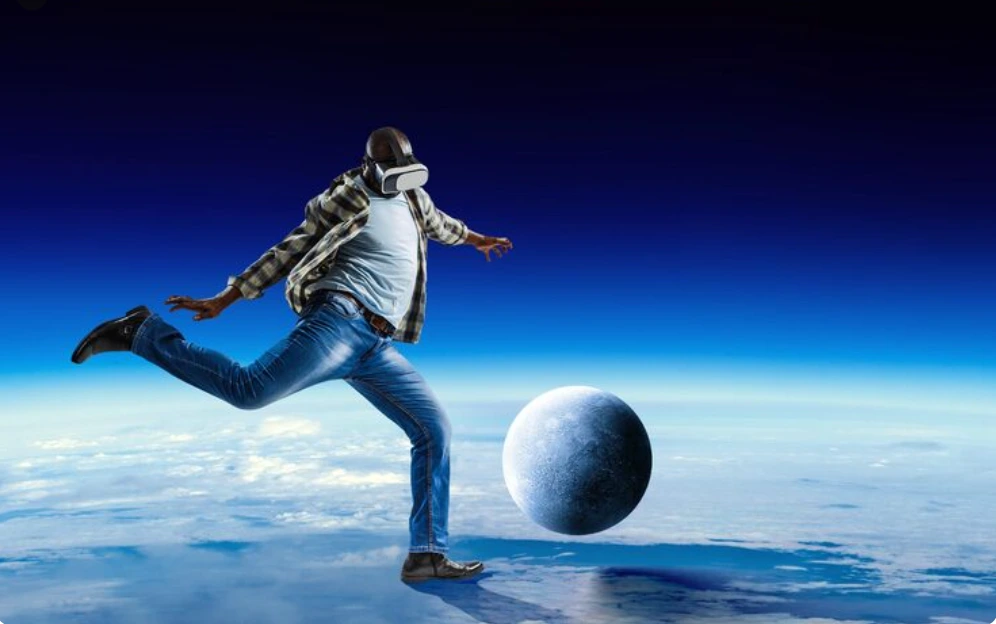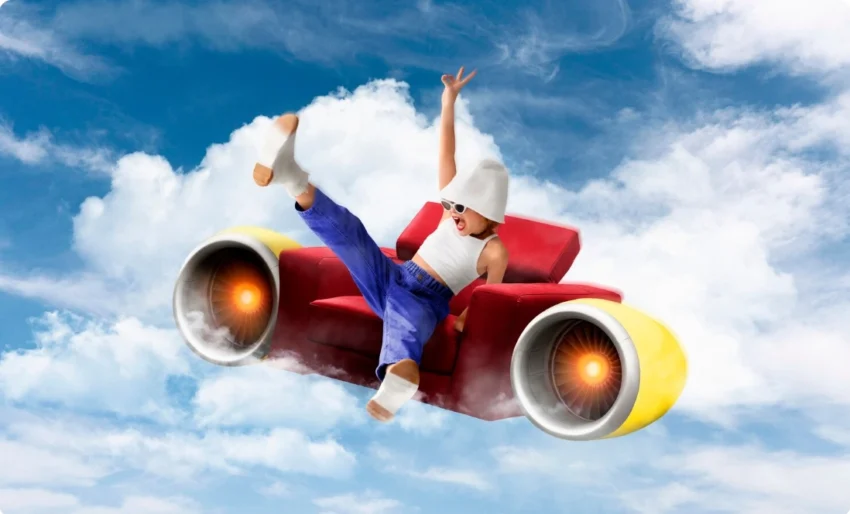Introduction
Imagine floating effortlessly in mid-air, weightless and free, as if you were an astronaut drifting through space. This thrilling sensation is known as the Zero Gravity Experience—a unique adventure that allows people to experience what it feels like to be in a state of weightlessness, similar to astronauts in orbit. Whether you are an adventure enthusiast, a space lover, or someone looking for a once-in-a-lifetime thrill, a Zero Gravity Experience offers an unforgettable journey beyond the limits of Earth’s gravity.
In this comprehensive guide, we’ll explore everything you need to know about a Zero Gravity Experience, including how it works, the different ways to experience it, the benefits, costs, safety measures, and much more.
What Is a Zero Gravity Experience?
The term “Zero Gravity” refers to a condition in which there is no net gravitational force acting on a body. In simple terms, it means being weightless or experiencing free fall. While true zero gravity is impossible to achieve on Earth due to the planet’s gravitational pull, it can be simulated for short periods using special methods.
A Zero Gravity Experience is a carefully controlled environment where individuals can float, spin, and move freely as if they were in outer space. This experience replicates the sensations astronauts face while orbiting the Earth and provides a remarkable insight into the physics of space travel.
How Does a Zero Gravity Experience Work?
There are several methods to simulate zero gravity on Earth. The most popular and authentic way is through parabolic flights, operated by specially modified airplanes. Here’s how it works:
Parabolic Flight
- The airplane follows a parabolic trajectory—a series of steep climbs and descents.
- During the steep dive, passengers experience free fall lasting about 20 to 30 seconds.
- During this free fall, the effects of gravity seem to vanish, allowing people inside to float weightlessly.
- The plane then pulls out of the dive and levels off, returning passengers to normal gravity.
These flights typically offer multiple parabolas during a single flight, allowing participants several opportunities to experience weightlessness.
Other Methods
- Neutral Buoyancy Pools: Used mostly by astronauts for training, these deep pools allow people to simulate the sensation of weightlessness underwater.
- Virtual Reality (VR) Simulators: Technology now enables simulated zero gravity experiences through VR, although these are less physical and more visual.
- Space Tourism: As commercial space travel becomes more accessible, companies like Blue Origin and Virgin Galactic offer genuine zero gravity experiences during suborbital flights.
Types of Zero Gravity Experiences
1. Parabolic Flight
The most authentic and physically accurate way to experience zero gravity on Earth. Passengers undergo training before the flight to prepare for weightlessness and the physical sensations involved.
2. Neutral Buoyancy Training Pools
Used for astronaut training, these pools allow you to float in water while wearing weighted suits to counteract buoyancy, simulating zero gravity.
3. Space Tourism Flights
The newest and most exciting option involves real spaceflight. Companies offer suborbital flights that provide several minutes of weightlessness beyond Earth’s atmosphere.
4. Simulators and Virtual Reality
Advanced simulators combine physical movement and VR to create the illusion of zero gravity, though they lack the actual physical sensation.
Benefits of a Zero Gravity Experience
Physical Benefits
- Improved body awareness and coordination due to the lack of gravity.
- Helps in understanding the effects of microgravity on the human body.
- A fun way to exercise muscles that are rarely used on Earth.
Psychological Benefits
- Provides a unique sense of freedom and weightlessness.
- Inspires curiosity and interest in science, space exploration, and technology.
- Offers a thrilling and memorable adventure, boosting mental well-being.
Educational Benefits
- Provides hands-on understanding of physics concepts like gravity, free fall, and inertia.
- Encourages interest in STEM fields, especially space sciences.
Who Should Try a Zero Gravity Experience?
Almost anyone who is healthy and curious can enjoy a zero gravity experience. It is especially popular among:
- Space enthusiasts and astronomy lovers.
- Adventure seekers looking for new challenges.
- Students and educators wanting practical space science exposure.
- Athletes and performers interested in body movement in zero gravity.
However, some health restrictions may apply—people with certain medical conditions should consult their doctor before participating.
How to Prepare for a Zero Gravity Experience
Physical Preparation
- Stay hydrated and well-rested before the experience.
- Follow any instructions given by the operators or flight staff.
- Wear comfortable, loose clothing recommended for the experience.
- Avoid heavy meals before the flight to reduce the risk of motion sickness.
Mental Preparation
- Understand what to expect during the zero gravity phase.
- Prepare for the sensation of floating and potential disorientation.
- Stay calm and enjoy the moment!
Cost and Availability of Zero Gravity Experiences
Parabolic Flights
Parabolic flights typically cost between $5,000 to $8,000 per person for a single flight lasting 1.5 to 2 hours. The cost depends on the operator, location, and services included.
Space Tourism
Suborbital space flights with companies like Blue Origin or Virgin Galactic can cost hundreds of thousands of dollars, making it a luxury experience for now.
Simulators and VR Experiences
More affordable options are available for a few hundred dollars, though they lack the authentic physical sensation.
Where to Find Zero Gravity Experiences?
- Companies like Zero-G Corporation (USA) specialize in parabolic flights.
- Space tourism providers like Virgin Galactic.
- Select research centers and space museums may offer simulation experiences.
Safety Concerns and Regulations
Zero gravity experiences are generally safe but require adherence to strict safety protocols:
- Medical screening before participation.
- Trained instructors and pilots conduct flights.
- Use of safety equipment like seat belts during the plane’s normal flight phases.
- Emergency procedures are in place.
Participants should disclose any medical conditions and follow all instructions carefully.
Frequently Asked Questions (FAQs) About Zero Gravity Experience
1. What does a Zero Gravity Experience feel like?
You feel as if you are floating freely, without any weight pulling you down. It’s similar to what astronauts feel in space—an amazing sensation of freedom and lightness.
2. How long does the zero gravity phase last?
Each zero gravity phase during a parabolic flight lasts about 20 to 30 seconds. Flights usually include multiple parabolas, providing several such phases.
3. Is Zero Gravity Experience safe?
Yes, it is generally safe when conducted by reputable companies. Medical screenings and trained staff ensure participant safety.
4. Can anyone participate in a Zero Gravity Experience?
Most healthy individuals can participate, but people with heart conditions, pregnancy, or other serious health issues should avoid it.
5. How much does a Zero Gravity Experience cost?
Parabolic flights cost between $5,000 to $8,000, while space tourism flights can be much more expensive.
6. Where can I try a Zero Gravity Experience?
Several companies worldwide offer parabolic flights and simulators. Space tourism companies provide real suborbital flights.
7. Do I need training before the experience?
Basic training and briefing are provided before the flight to prepare participants for the sensations of weightlessness.
8. Can kids try Zero Gravity?
Age restrictions vary by provider, but many require participants to be at least 12 to 18 years old.
9. Will I get motion sickness?
Some people may experience nausea or dizziness due to the flight’s motion. Operators usually provide guidance to minimize this.
10. How is Zero Gravity different from microgravity?

Zero gravity is a condition where no gravitational force is felt, while microgravity means a very small amount of gravity is still acting on the body.
Conclusion
A Zero Gravity Experience is a once-in-a-lifetime adventure that lets you float, fly, and feel the incredible sensation of weightlessness. Whether through parabolic flights, space tourism, or simulators, this experience offers a unique perspective on life beyond Earth’s pull. From thrilling adventure to educational insights, it opens a door to the wonders of space exploration for everyone.
If you have ever dreamed of defying gravity and touching the stars, a Zero Gravity Experience is the perfect way to turn that dream into reality.
